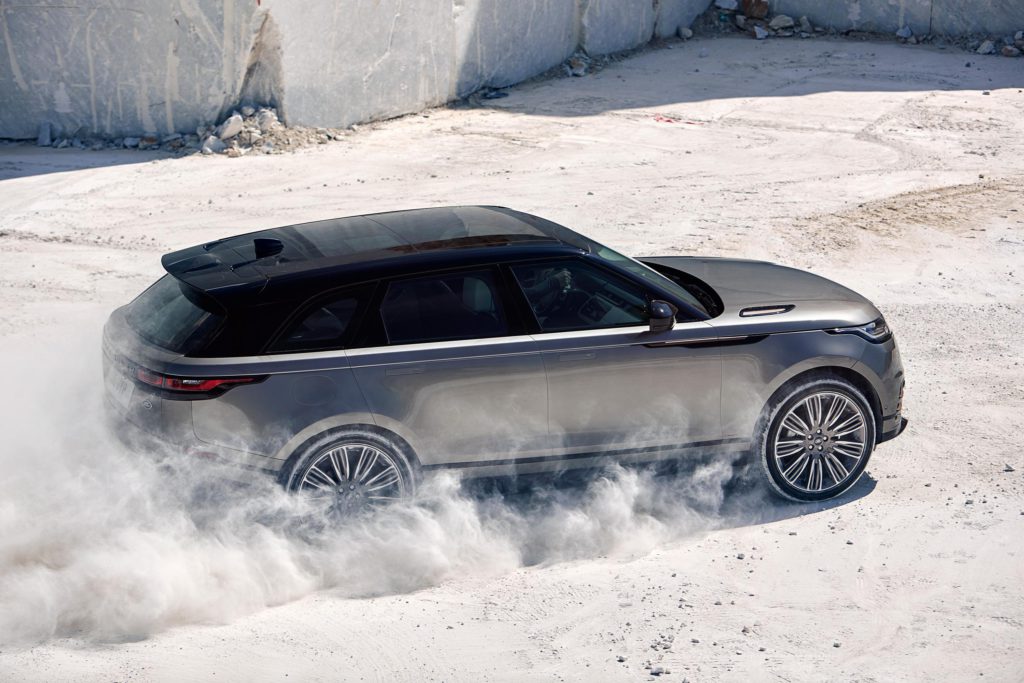Strong Jaguar Land Rover performance continues on surging F-Pace demand
10 August 2017

10 August 2017
Britain’s biggest carmaker Jaguar Land Rover’s (JLR’s) revenue surged up 5% to £5.6 billion (€6.3 billion) in the second quarter as sales rose 3.5% to 137,463 vehicles, but high model investment weighed on underlying profitability. Soaring sales growth was led by the Jaguar F-Pace, up 86% year on year, cementing its position following its 2016 introduction. Strong demand also continued for the long-established flagship Range Rover, up a further 14%.
Sales launched a further 30% in China, helped by a new Jaguar XFL long wheelbase variant which boosted XF sales by 22%. There was also a healthy rise of 16% in North America, but Europe sales were flat, weighed down by a 14% fall in JLR’s domestic market, due to the new changes to the UK Vehicle Excise Duty introduced in April 2017.
While pre-tax profits rose to £595 million (€659 million), this included a £437 million (€484 million) boost to the figures from changes to the way JLR’s pensions are calculated, with profit excluding this only £158 million (€175 million), down from £399 million (€441 million) the year before.
This was due to heavy investment in its product portfolio, including the launch of the Range Rover Velar midsize SUV this summer, as well as the upcoming Jaguar E-Pace, Jaguar XF Sportbrake and all-electric Jaguar I-Pace. These investments total more than £4 billion (€4.4 billion) in the 2017/18 financial year, including the building of its new plant in auto hub Slovakia to boost its manufacturing capacity.
JLR CEO Ralf Speth said: ′In challenging market conditions we are continuing to plan for profitable, sustainable growth. Our teams have been hard at work creating world-class cars in an unprecedented level of launch activity for Jaguar Land Rover″¦
′In addition, the″¯forthcoming Jaguar E-Pace, Jaguar XF Sportbrake and electric Jaguar I-Pace will ensure that we will strengthen our portfolio and attract yet more new customers.’
JLR’s Indian parent Tata Motors’ reliance on its UK division increased further as its domestic business continued to haemorrhage sales, with a 4.7% upswing in its passenger vehicle arm swarmed by a 35% collapse in its commercial vehicle business, and continuing pressure to kill off the heavily loss-making Tata Nano, launched as the world’s cheapest car in 2008.
Premium manufacturer JLR, whose SUV specialist Land Rover wing sales volumes are particularly strong, sees the most potential for premium pricing and luxury execution in its Range Rover line-up, which has a broad price range from £76,000 (€84,000) to £176,000 (€194,000), and bespoke-manufactured models topping £200,000 (€221,000). Land Rover Chief Design Officer Gerry McGovern told Automotive News the strong customer base for the Range Rover and Range Rover Sport in unrivalled in the industry, adding: ′No other manufacturer sells that volume of vehicles at that price point in that market sector.’
He also dismissed concerns that the autonomous era threatens the margins created by the desirability of vehicle brands. He pointed to the Swiss watch industry, saying: ′You don’t need a watch any more, but the levels of investment and revenue are still very high. That’s all fuelled by desire. People buy them because they resonate with them.’ He explains: ′People have a visceral desire to own vehicles that they enjoy and that resonate on an emotional level. For me the thing that delivers that is the design. Design is the glue. So, for me these things can only come to life though a brand’s essence; [they are more than] just commodities.’
Photograph courtesy of JLR